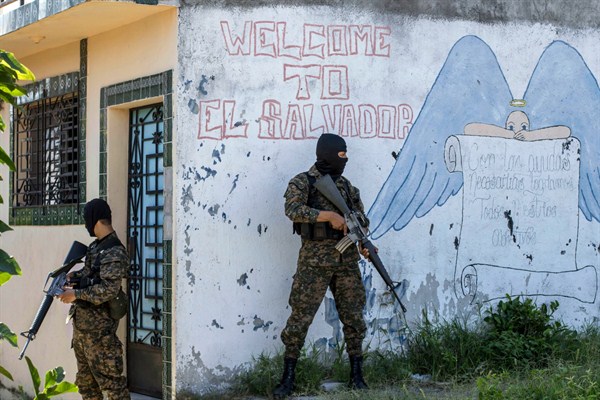On Jan. 16, El Salvador commemorated the 24th anniversary of the peace accords that ended the country’s 12-year civil war between the government and the then-rebel Farabundo Marti National Liberation Front (FMLN). But despite a quarter-century of peacebuilding, El Salvador continues to face the scourge of widespread violence: In 2015, the country’s homicide rate hit 104 per 100,000 people, a dramatic increase from 61.8 in 2014 and the worst in the world. To put the magnitude of that proportion in context, the World Health Organization classifies a rate of 10 per 100,000 people as an epidemic. El Salvador’s murder rate last year was the highest for any country that the World Bank had studied in nearly 20 years.
The surge in murders was just the latest sign that a truce negotiated between the government and gangs that held from 2012 to 2014 has failed to deliver the long-term respite from violence that so many Salvadorans seek. Since 2014, when it became clear that President Salvador Sanchez Ceren’s government would not negotiate a new truce, violence between and among gangs, state security forces and some more sinister elements has spiraled out of control. Stories of extortion and systemic impunity, as well as the images of dead bodies that flood the Salvadoran media daily, clash with the country’s image as one of the United Nations’ most successful cases of postwar peacebuilding.
For two years leading up to the peace deal that brought an end to civil war in 1992, the U.N. assisted the parties in negotiating a comprehensive settlement. Among the most important reforms, the accords placed the military under civilian control, eliminated nefarious security forces, and created a new national police. The FMLN became a viable, left-wing political party. Building on its success at the local and parliamentary elections, the FMLN won presidential elections in 2009 and 2014.

